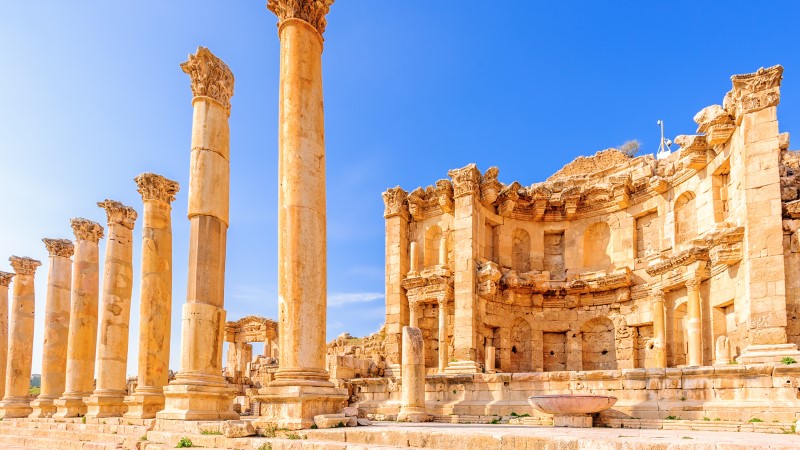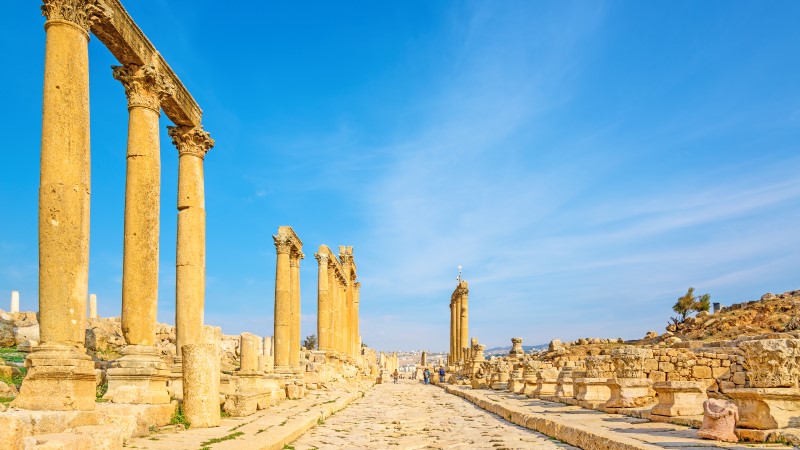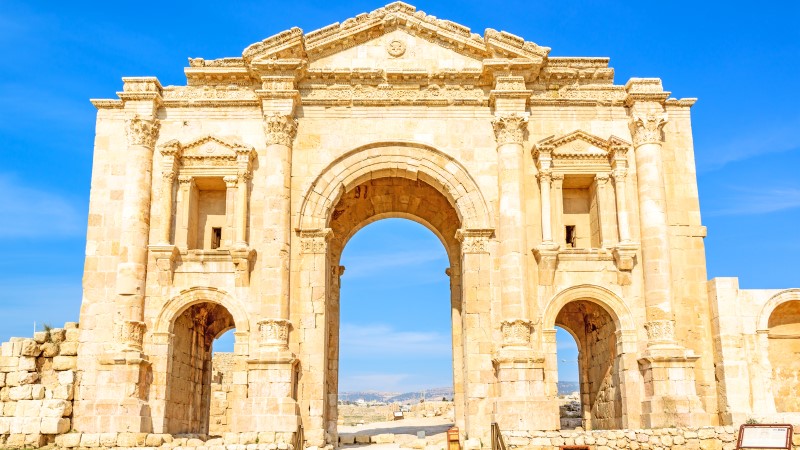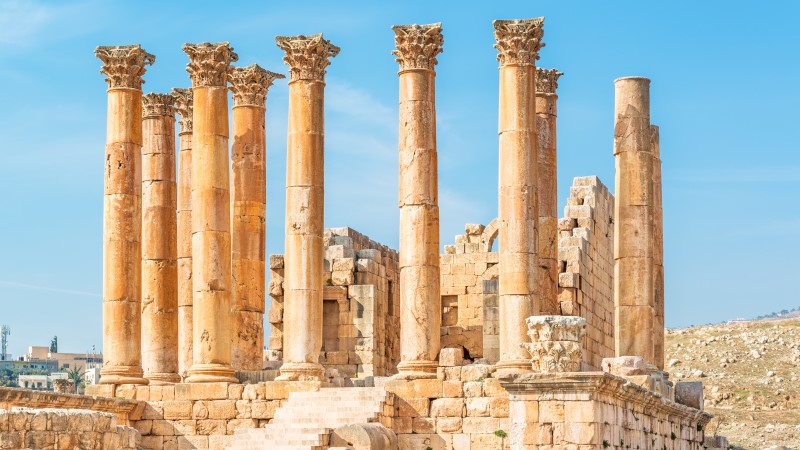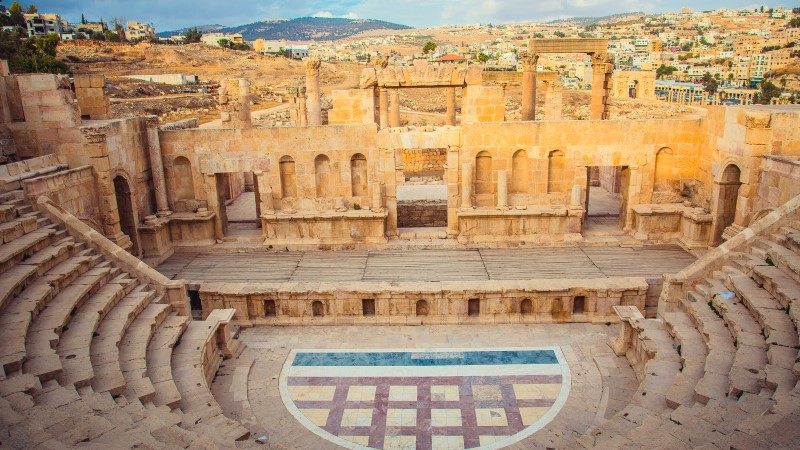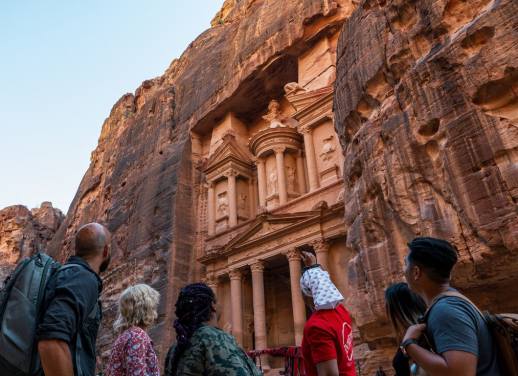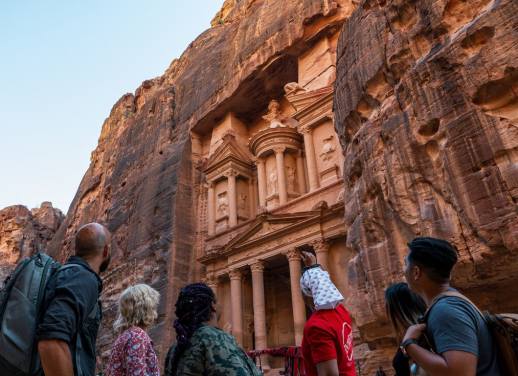Believed to be one of the best Roman sites outside Italy, the ancient city of Jerash is not to be missed.
Known for its astonishing preservation, it was once a grand Roman settlement that thrived because of its location along the historic spice and incense trade routes. Often overshadowed by world-famous Petra, Jerash enjoys smaller crowds meaning you don’t have to plan your visit months in advance. The perfect distance for a day trip from Amman or Madaba, you won’t regret making a pitstop here during your journey across Jordan.
A very brief history
Boasting a long and colourful past, settlements have existed on the site of Jerash for millennia with archaeological digs unearthing relics dating back as far as the Stone Age. The city of Gerasa (or Jerash as we now know it) was founded in the Hellenistic Era. Although the question of who founded it is still up for debate.
After the Roman conquest in 63 BC, Jerash became part of Roman-ruled Syria and the Decapolis (a collection of 10 cities that formed the eastern frontier of the Roman Empire). In the centuries that followed it was invaded by the Persians, devastated by an earthquake, partially converted into a fortress and inhabited by the Ottomans – to name but a few of its milestones.
RELATED: JORDAN – WHAT TO KNOW BEFORE YOU GO
Points of interest
An extensive collection of archways, churches, theatres, baths and more – few people realise the scale of Jerash before coming here. With so much to see you could easily spend a day or so exploring. But, if you’re short on time here’s a handful of ruins you can’t afford to miss.
The Arch of Hadrian
Measuring 11 metres at its highest point, the Arch of Hadrian is a triple-arched gateway to the city. Built in 130 AD, it commemorates the visit of Roman emperor Hadrian in 129 AD. Originally twice the size, its arches came fitted with large wooden doors. When checking it out, be sure to look up and admire the floral reliefs that decorate its top.
EXPLORE JERASH ON TWO WHEELS AS YOU CYCLE JORDAN
The cardo maximus
To give a bit of background, cardo maximus was the Latin name for the main north-south running street in any ancient Roman city. Extending from the North Gate all the way to the impressive Oval Plaza, Jerash’s cardo maximus spans 800 metres and is lined with tall columns on either side. It’s well worth strolling its full length and keep an eye out for grooves in the flagstones caused by chariot wheels.
The hippodrome
Constructed between the 1st and 3rd centuries AD, this ancient sporting arena was once able to house around 15,000 spectators. Used to put on gory gladiator fights and adrenaline-fuelled chariot rides, visitors can still experience a slice of this history at the occasional re-enactments staged here.
SUBSCRIBE TO OUR NEWSLETTER FOR THE LATEST OFFERS, COMPETITIONS & TRAVEL TIPS
Temple of Artemis
As the patron goddess of Jerash, Artemis was held in extremely high regard by its Hellenistic population. This temple, built in her honour, sits perched above the city. Surrounded by 12 elaborately carved columns (only 11 nowadays), its ruins are some of the most astounding in the whole of Jerash.
The nymphaeum
As its name suggests, the nymphaeum of Jerash was dedicated to the mythical Greek water nymphs. Sat on the western side of the cardo maximus, this two-storey construction was home to the city’s central ornamental fountain. Rumour has it that water would have flowed into the main pool and any overflow would have been spouted from seven lions’ head statues.
EXPERIENCE JERASH, PETRA, WADI RUM & MORE ON THIS 8-DAY DISCOVERY
The North Theatre
Called an odeon in a late 2nd-century inscription, the North Theatre would have been used to put on musical shows, poetry recitals and so on. But its original purpose was as a place to hold important government meetings. As you wander around, cast your eyes over the seats and you’ll see that lots of them are engraved with the names of the city councillors who sat in them.
Hints and tips for visiting Jerash
Broadly speaking, Jerash has a fairly moderate climate, but May to September can get pretty toasty with temperatures getting into the 30s (or high 80s if you’re talking Fahrenheit). If you choose to visit the ruins at this time of year, be sure to bring a sunhat, sun cream and plenty of water. Alternatively, arrive early to beat the crowds and escape the heat of the day.
RELATED: OUR COMPLETE JORDAN PACKING GUIDE
Opening hours vary depending on the seasons: 7:30am to 7pm in summer and 8am to 5pm in winter. If you can, visiting at sunset is lovely. When the sun’s dying rays cast colourful hues across the monuments – making for some stunning photography opportunities.
The entry fee for tourists is about 10 Jordanian dinars – an absolute steal! This is taken care of when you visit the ancient city on an Intrepid trip.
SPEND 15 DAYS UNEARTHING EGYPT & JORDAN
Keen to explore Jerash and beyond? Check out Intrepid Travel’s full range of small group tours to Jordan today.

